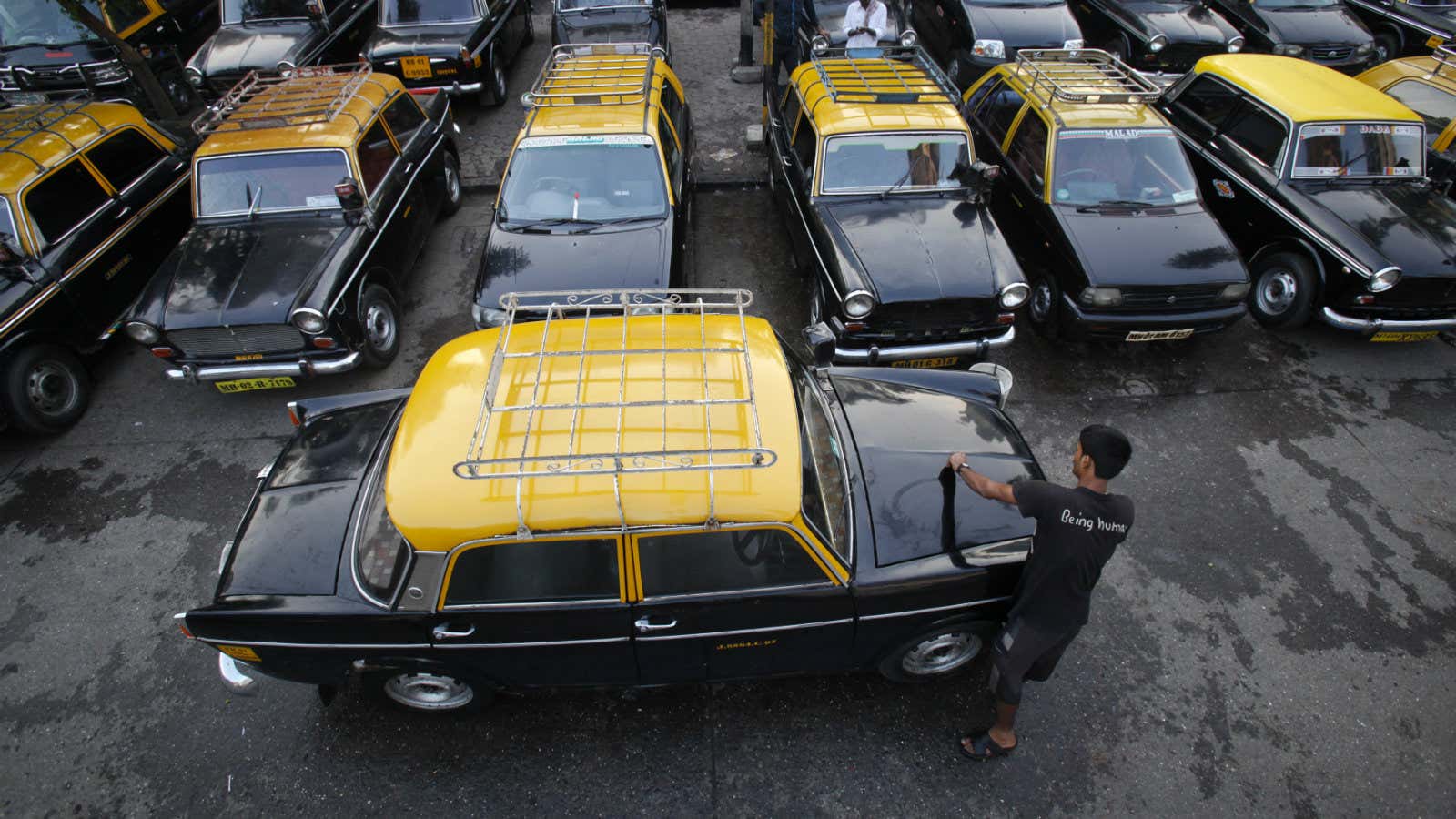The car that took Aparna Jayakumar and her husband from their wedding to the Taj Mahal Hotel, at Colaba, where they spent the night, was a Premier Padmini. “I grew up travelling in this car and am obsessed with it,” said the Doha-based documentary and lifestyle photographer. “It was my inspiration for a photo series and I had to ensure it was part of my wedding. The Taj doesn’t allow these taxis to enter but ours was all decked up, so they did.”
This month, the Taj Mahal Palace will allow the taxi into its hallowed halls—specifically its art gallery—for an exhibition by artist Anjali Gidwani, titled Padmini. Through her installations, the artist wants to “recount the life and times of the car and give it a grand sendoff in a place that isn’t normally accessible to it.”
The Premier Padmini, or Pad as it came to be known, was once manufactured by Premier Automobiles Limited, under a licence from Fiat. It was originally marketed as the Fiat 1100 Delight and then the Premier President before rolling out of a plant in Kurla as the Premier Padmini. It came to dominate and become synonymous with the city’s taxi fleet in the 1970s.
Today, with production stopped and a 2008 government decree requiring cabs older than 25 years to be retired, the Pad is on its way out. A few still ply the roads but for the most part, the taxi exists in the memory of nostalgic commuters and locals. For some, it’s about sentiment; for others, artistic inspiration.
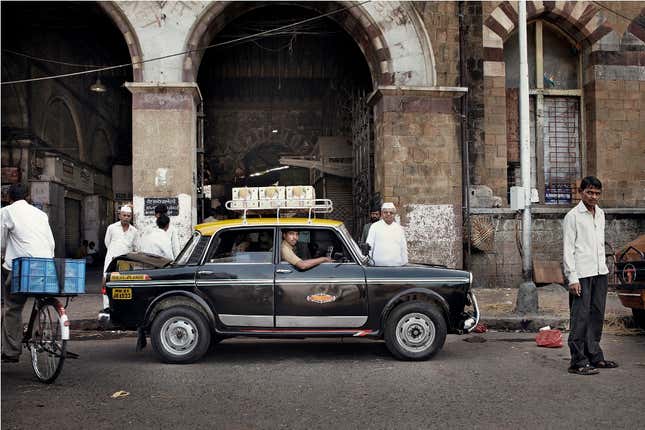
Inside out
The Padmini has for long fascinated people. Today, say “kaali peeli” (black and yellow) and people will instantly imagine the Padmini with its loose door handles, the window half open, cramped seating, bright funky lights, disco bhagwans (icons of gods and goddesses), and funky seat covers.
“My exhibition is an attempt to capture the spirit of a bygone carriage, a continuation of conversations shared with innumerable taxi drivers,” said Anjali, who chooses to go by her first name. She didn’t want to make it another auto show, deconstruct the parts of the taxi, or show it as an art object. “I wanted to tell the story of these cars and the people who still drive them.”
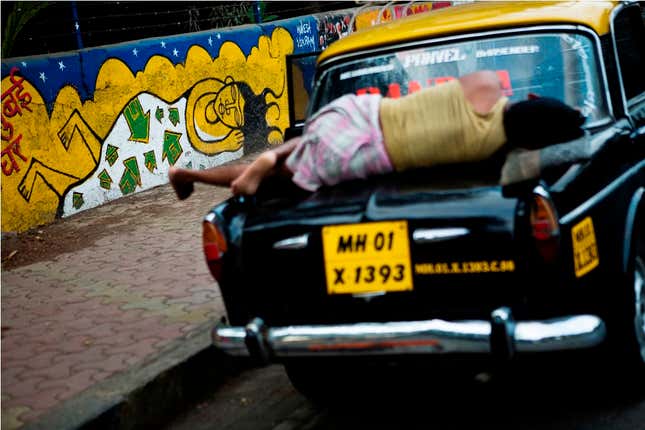
Her installation has four parts, and includes items taken from an actual 20-year-old kaali peeli that she sourced. The first part has people walking in on a red carpet—a throwback to when the car ruled the roads and welcomed everyone in it. A room of windscreens is meant to showcase an object that most people don’t care about too much but which is intrinsic to their safety. Her version of an altar mimics the tiny dashboard altars common to these taxis. The last section highlights the various parts that are integral to the functioning of the car and how, if taken apart, they can signify the death of the vehicle.
“The Padmini is a product that has gone through many life and cultural cycles, starting as a premium car, moving to becoming a middle-class symbol, and, finally, getting down to the street,” said fashion designer Nimish Shah, who collaborated with the Taxi Fabric project to change the interiors of a Padmini. “It is now a quintessential [symbol] of Bombay living and has the feel of a time capsule. It makes for an inspiring case study.”

Taxi Fabric turned the seat covers of these kaali peelis into canvases for designers, showcasing art featuring city life, freedom fighters, Bollywood’s heroes, dabbawallas, and the city’s nightlife. In a bid to un-pimp the taxi, Shah decided to highlight a time when the Padmini—named after a legendary Hindu queen—ruled the road. He sought inspiration from Jodhpur’s Umaid Bhavan Palace, with marble patterned ceiling, petro and tan upholstery, and grid patterns on the windows.
But it was the pimped-up interiors that caught Mumbai journalist Rachel Lopez’s attention and she decided to document the quirky ceiling art on social media under the hashtag #TaxiTops. Her feed thus is a colourful mix of fruits and flowers, geometrical patterns, and abstract prints.
People and places
If Taxi Fabric and #TaxiTops highlight the interiors of the kaali peelis, Jayakumar and Finnish photographer Markku Lahdesmaki wanted to draw attention to those forgotten heroes: the taxi drivers.
In 2011, Lahdesmaki was sitting in a bar in Mumbai thinking of what he could photograph in the next three days, when he decided on the ubiquitous taxi. “A friend and I drove around the city, finding interesting places and then taxis to photograph in that place,” he said. “I noticed that the drivers were very proud of their car. It was something very special for them. I wanted to show that in my photos.” He turned his lens to the exterior of the car and the resultant photo project, Mumbai Taxi Co, has now branched out to include T-shirts and booklets highlighting the car. “These Premier Padmini taxis didn’t feel like vintage or classic cars. They were part of the Mumbai’s culture, monumental pieces of its landscape.”
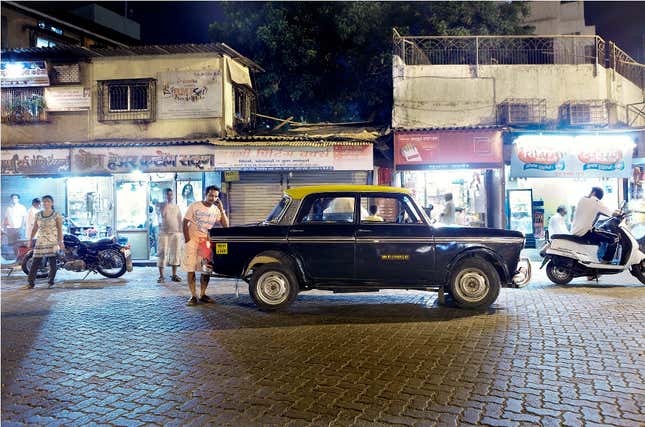
Jayakumar’s Goodbye Padmini series, which she worked on between 2010 and 2011, used the disappearing taxis to tell the story of Mumbai—a city in flux, rapidly changing, ever-ready to throw out the old and embrace the new. “I wanted to go beyond the visuals and look at the larger human story—of immigrants who’ve moved here with dreams and end up being taxi drivers,” she said. “These cars being taken off the roads means these people would lose their livelihoods.” Her series looks at the car as a symbol of society, of movement and change in the lives of these people. The photographs show the hull of the car, drivers sleeping on the hood, the colourful dashboards, the stickers clustered on the glass, and she also showcases the lives of their drivers and their meager quarters.
Jayakumar still has an attachment to the car. “The first time I brought my daughter to Mumbai, I photographed her inside the Padmini,” she said.
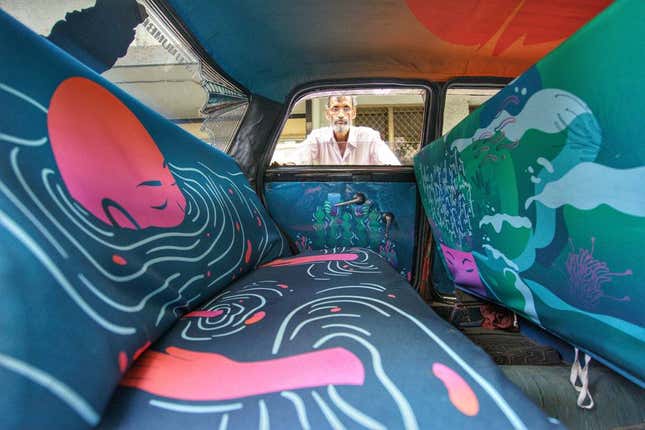
Though once part of the city’s landscape, it is now rare to find people who will voluntarily step into a Padmini taxi in this age of Ubers, Olas and AC cars. Anjali still does and enjoys her conversations with the drivers. As does Shah —“If I have to hail a cab, I will hop into a kaali peeli purely because of the nostalgia factor. Imagine, you have to change your whole posture to fit into one, deal with a window that doesn’t roll down, and remain unsure about whether the car door clicked.”
He believes that people will notice what a beautiful item the Padmini was only after it is gone. “Everyone in the city will then have their own story or recollection of the taxi,” he said. “It will live on in sentiment.”
This piece was first published on Scroll.in. We welcome your comments at [email protected].
